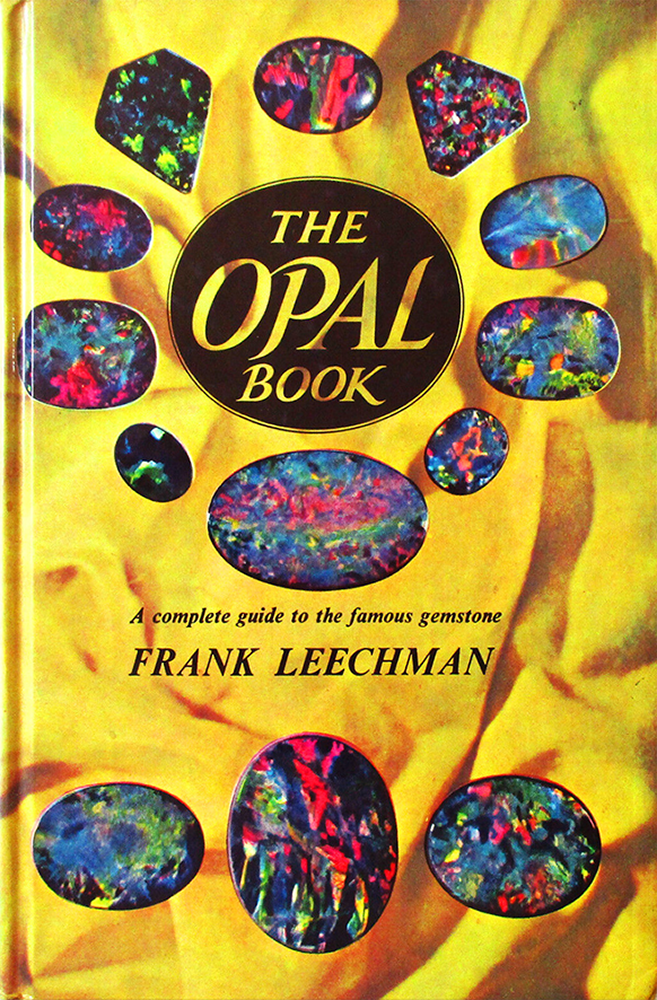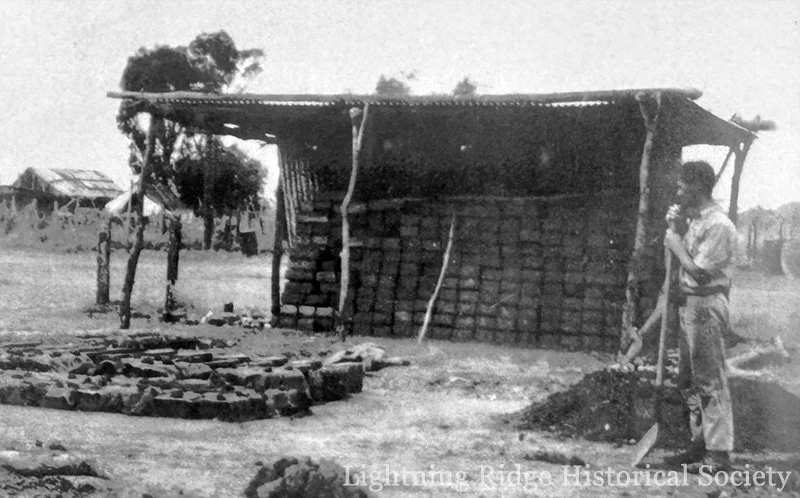Frank Leechman
George Francis “Frank” Leechman was born in 1899 in Coventry, Warwickshire, England to parents George Douglas Leechman and Florence Amy Petch.
Leechman wrote The Opal Book, which was published in 1961 by Ure Smith. The book is one of the earliest comprehensive volumes on opal history and opal science, worldwide.
Leechman was a British merchant marine captain, who had a huge fondness for opal and traveled the world to visit (and write about) opal-bearing locations.
In the 1950s, Leechman wrote a number of scientific papers about opal formation and the optical mechanisms that create play-of-colour in precious opal.
Leechman was a traveller and was not local to Lightning Ridge, although he did spend some time in the town and mined at Nobby’s Hill, although he did not mine there for long. Leechman lived in Australia for about ten years.
Leechman experimented with the creation of synthetic opal, however he was apparently never successful.
The Opal Book covers opal discovery and opal formation in many places, including the Australian opal fields. Among the Lightning Ridge topics referenced by Leechman are: Andamooka, E. C. Andrews, Angledool Station, Bald Hill, Barney’s Ridge, Beckett’s Tank, The Black Prince, Fred Bodel, Walter Bradley, Phil Brady, George Brown, Snowy Brown, Bob Buckley, The Butterfly (field), The Butterfly (Red Admiral), Canfell’s, the Canfell Brothers, Coober Pedy, Dungalear Station, Charlie Dunstan, Dunstan’s Stone, Empress of Australia, Bill Etheridge, Peter Ferguson, The Flame Queen, Flamingo, Four Mile, Dolly Frazer (“Polly”), Harold Frazer, Goodooga, Grawin, “Irish Joe” Hegarty, Hawk’s Nest, Watty Heness (“Hennissey”), Iron Bark (field), Isidore Kozminsky, Jimmy Richards, Billy Klein, kopi, John Landers, The Light of the World, matrix opal, Jack McNicol (“Jock McNicol”), Ted Murphy, Florence Murray, Jack Murray, Jim Murray, the naming of Lightning Ridge, Nebea Tank, Charlie Nettleton, the Nettleton settlement, nobbies, Old Chum (“The Chum”, New Chum, Old Nobby, Old Town, Pandora, Jack Phillips, Pony Fence, Potch Point (“Pott’s Point”), Pride of Australia, John Prosper Ralston, Mrs. Ryan, Ernie Sherman, Sim’s Hill, B. J. Skertchly, spider, steel band, Curt Stevens, Telephone Line (“‘Phone Line”), They Struck Opal!, Three Mile, Tintenbar, Tree of Knowledge, Underwood, Tom Urwin, Walgett Spectator, Wallangulla, Weetalibah, White Cliffs, Tullie Wollaston.
John “Jack” Leechman (son of Frank) building the Mud Hut in Morilla Street, 1950s. Photograph: Lightning Ridge Historical Society collection.
His son, John “Jack” Leechman lived at Lightning Ridge for a period, building the Mud Hut in Morilla Street in the 1950s. John, his wife and his family were tragically killed in a car crash near Glen Innes in 1960, leaving no descendants.
Frank Leechman passed away on 9 February 1963 in Castlecrag, Sydney, leaving a legacy in the form The Opal Book, which may be the most quoted and referenced book about opal and opal history to date, being referenced in the bibliography of almost every opal-related volume since.
Signature of Frank Leechman, sourced from documents held in the New South Wales State Archives.
Article: Research by Russell Gawthorpe and Leisa Carney, edited by Russell Gawthorpe. LRHS research compiled by Len Cram and Barbara Moritz. Sources: Death certificate, reg. no. 675/1963, NRS-13660-44-18533-Series 4_574090, MHNSW; ‘The origin of the colour in precious opal’, G. F. Leechman, 1954; ‘Further notes on the cause of colours in precious opal’, G. F. Leechman, 1954; ‘Introductory bibliography on opal’, G. F. Leechman, 1955; ‘Observations on the origin of opal fields’, 1956, G. F. Leechman; The Opal Book, Frank Leechman, 1967, p. 126; A World of Opals, Allan Eckert, 1997, p. 142; ‘They Still Can’t Fake an Opal’, Australian Women’s Mirror, April 1961, p. 8.



